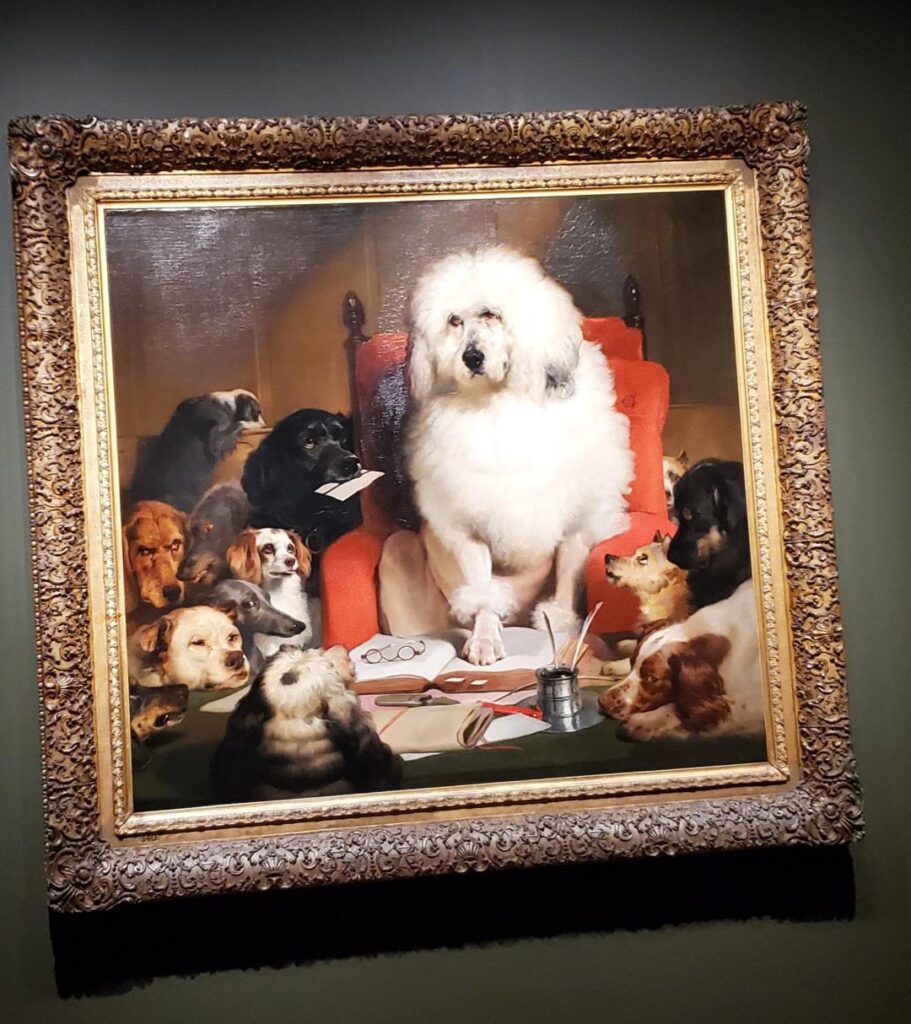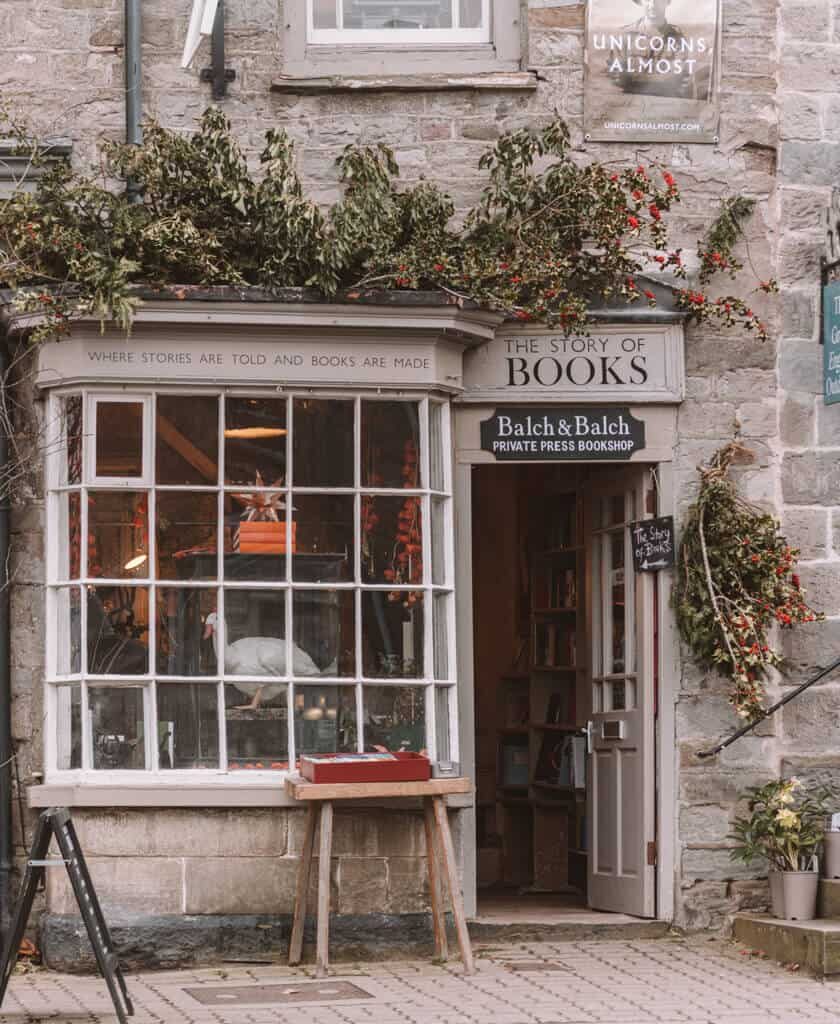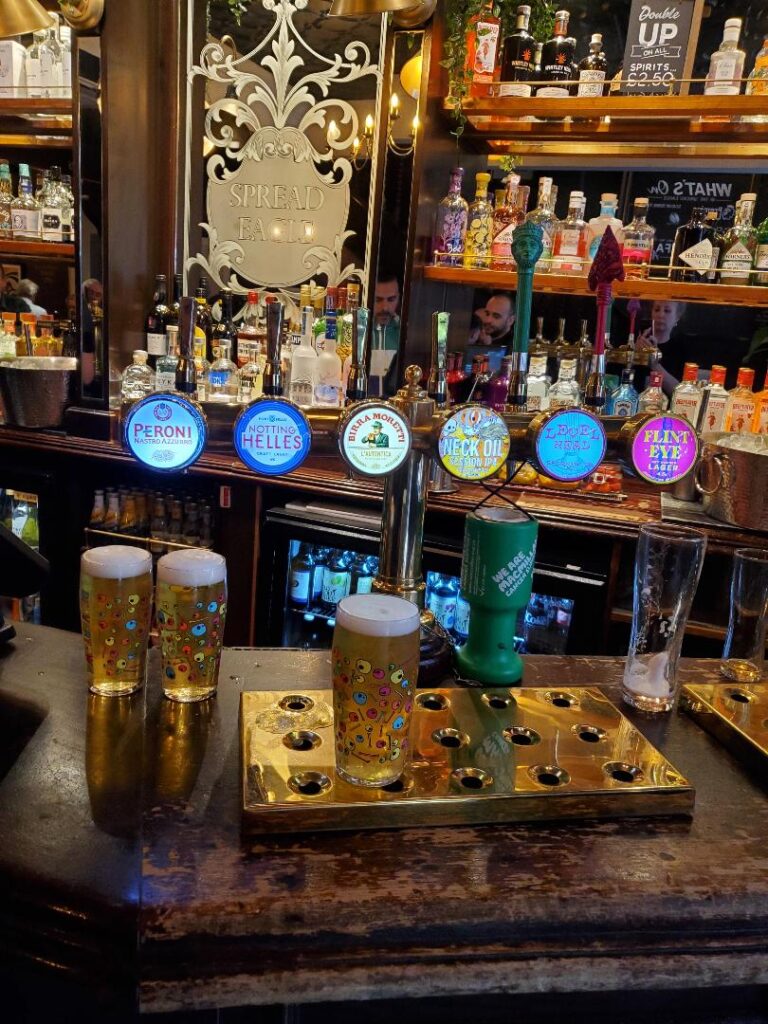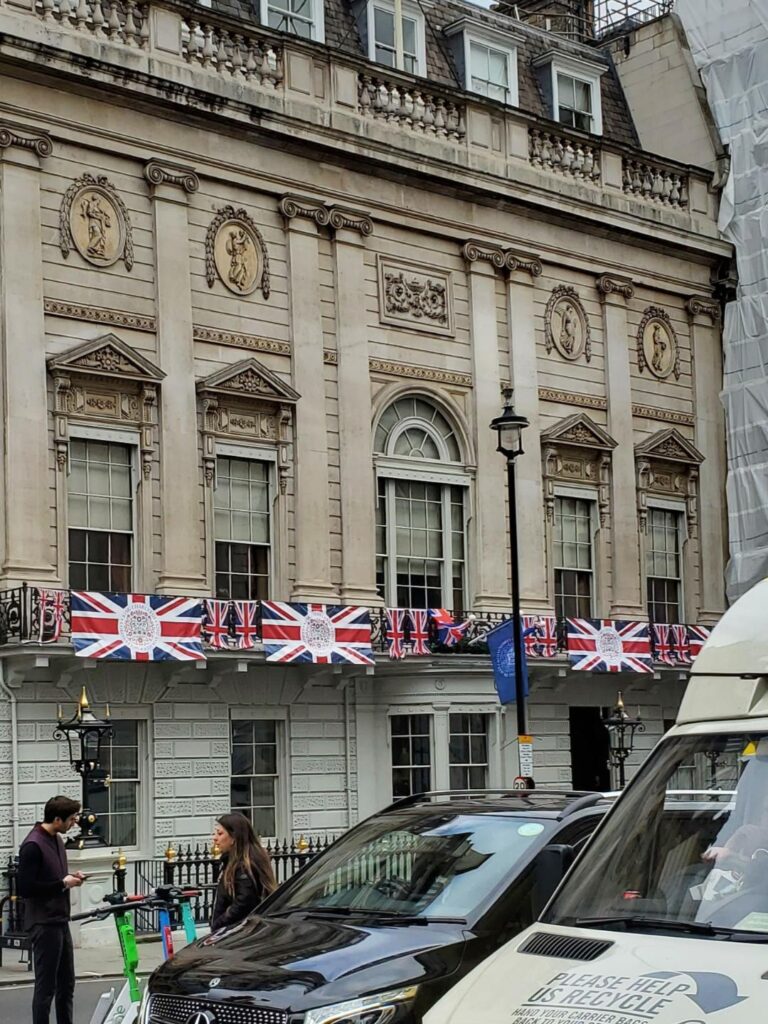
Recently, Victoria Hinshaw and I were fortunate enough to take in the Portraits of Dogs Exhibition at the Wallace Collection in London. From The Wallace Collection website:
“The exhibition explores our devotion to four-legged friends across the centuries. Through carefully selected paintings, sculptures, drawings, works of art and even taxidermy, the exhibition highlights the unique bond between humans and their canine companions.
“Dog portraiture developed as an artistic genre contemporaneously with its human counterpart – dogs are represented in the earliest cave paintings alongside humans – and it flourished, particularly in Britain, from the 17th century onwards. More than any other nationality perhaps, the British have both commissioned and collected portraits of dogs.”

The remarkable sculpture above is known as The Townley Greyhounds. Roman, by an unknown artist. Discovered by archaeologist Gavin Hamilton at Monte Cagnolo, outside Rome. Sold to antiquarian Charles Townley, whose decendants offered it to the British Museum in 1805.

Ah Cum, a Pekinese Dog – One of two dogs smuggled out of China in 1896 by explorer Douglas Murray, these dogs established the breed in Britain. Murray donated Ah Cum’s body after death to the Natural History Museum.

Hogarth’s dog, Trump – Produced by the Chelsea Porcelain Factory after a model by French sculptor Louis-Francois Roubiliac.

Dog of the Havana Breed by Jean Jacques Bachelier 1768. Here, the dog, obviously a favourite, seems to ask forgiveness after having played with its owner’s slippers, ribbon and coins.

Tristram and Fox by Thomas Gainesborough, circa 1775-85. While most canine portraits were produced for their owners, this is apparently a personal one, for Tristram and Fox were the artist’s own pets.

A Saluki Dog by Edwin Landseer, 1840-44. Landseer is known for his skill with canine portraits. Here, he breathes life into the subject via the dog’s curled lips and the flipped ear. It’s easy to imagine that the Saluki pounced just seconds later.

King Charles Spaniels (The Cavalier’s Pets) by Edwin Landseer 1845. Landseer painted this scene in two days for his patron, businessman Robert Vernon.

Hector, Nero and Dash with the Parrot, Lory by Landseer 1838. Here, Landseer portrays Queen Victoria’s favourite pets. The Queen pronounced the painting to be “the most beautiful thing imaginable.”

The Old Shepherd’s Chief Mourner by Landseer 1837. Admittedly one of two of my favourite Landseer paintings, the other being the portrait of Prince Albert’s greyhound, Eos, which was strangely missing from this exhibit. Landseer beautifully captures the collies’ heartbreak and devotion, the simple life of the shepherd is summed up in the few possessions depicted in the room. Contemporary art critic John Ruskin remarked on the painting’s “utter hopelessness.” Only the coldest heart could remain unmoved upon viewing the painting.


Doubtful Crumbs by Edwin Landseer 1858. A mastiff dozes with a bone while the terrier salivates with hunger – illustrating the Parable of Luke, in which Lazarus longed to “eat what fell from the rich man’s table.”


Laying Down the Law or Trial by Jury by Landseer c. 1840. One of the artist’s most successful works, it satirises the legal profession and its long and costly procedures. Exhibited at the Royal Academy in 1840, it was purchased by the 6th Duke of Devonshire, who asked Landseer to add his Blenheim spaniel, Bony, to the scene behind the greyhound on the left. Usually, visitors to Chatsworth House will see the painting hanging in the entry hall.
The Exhibition runs at the Wallace Collection, London, until 15 October 2023.




































































